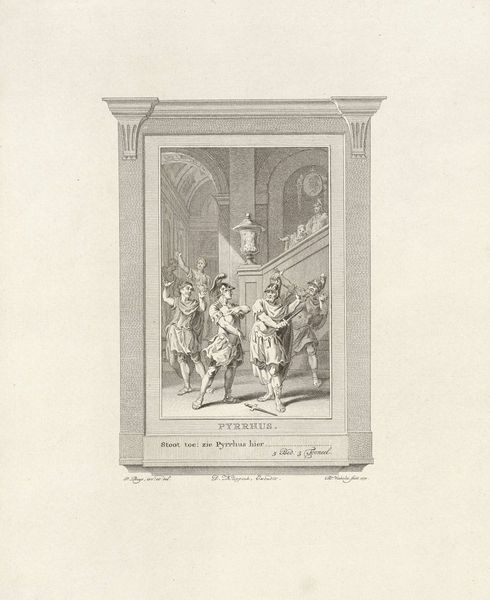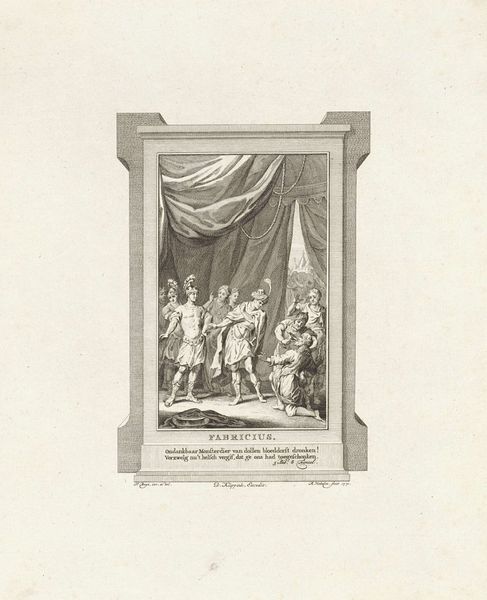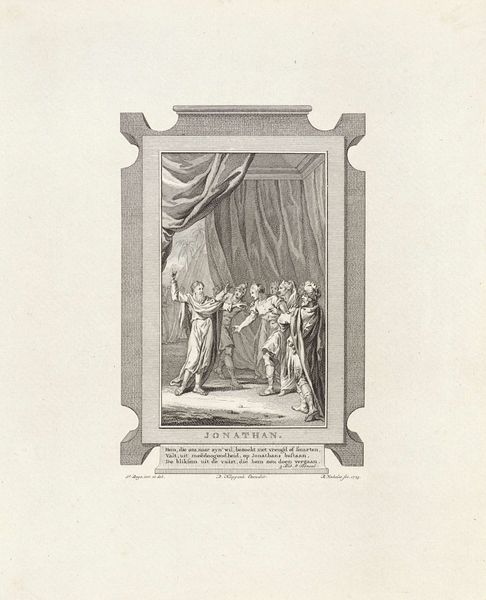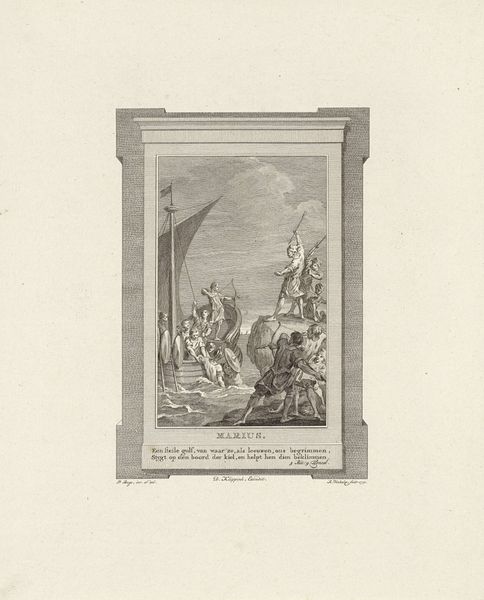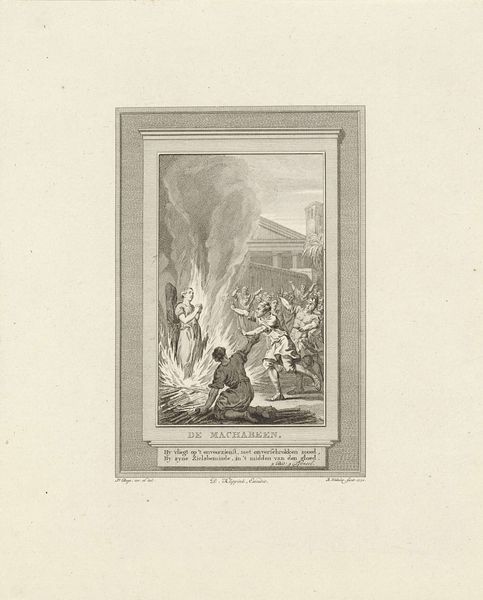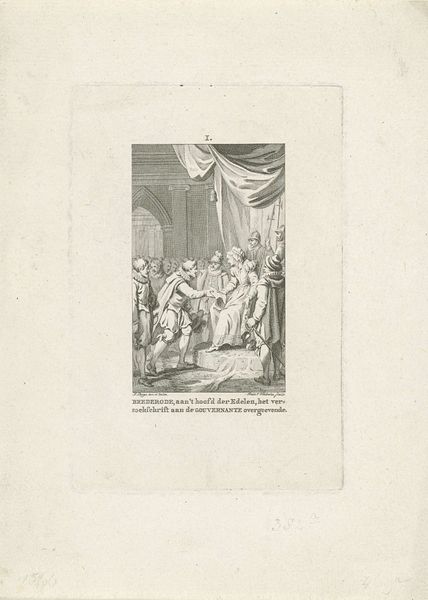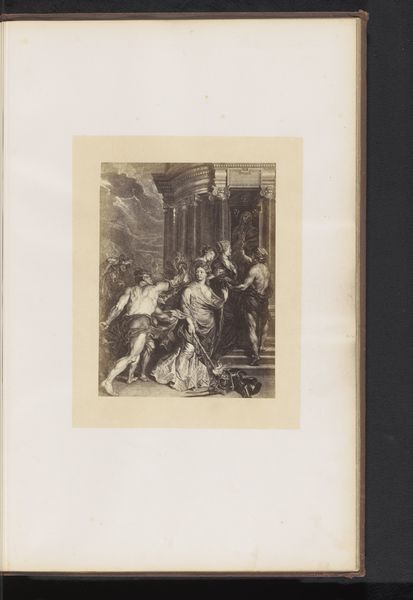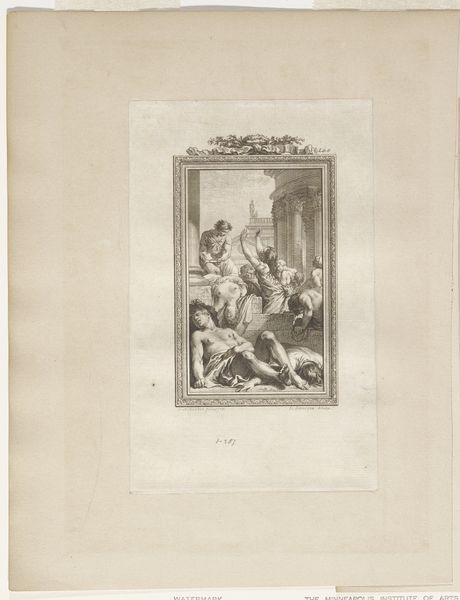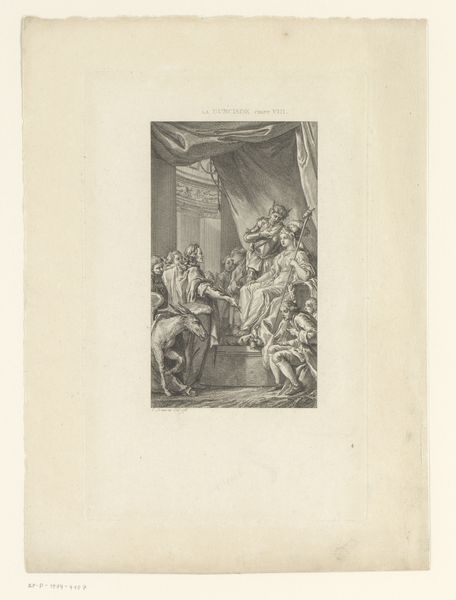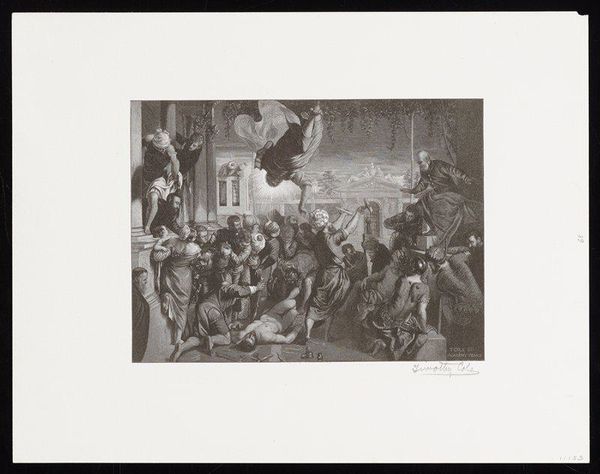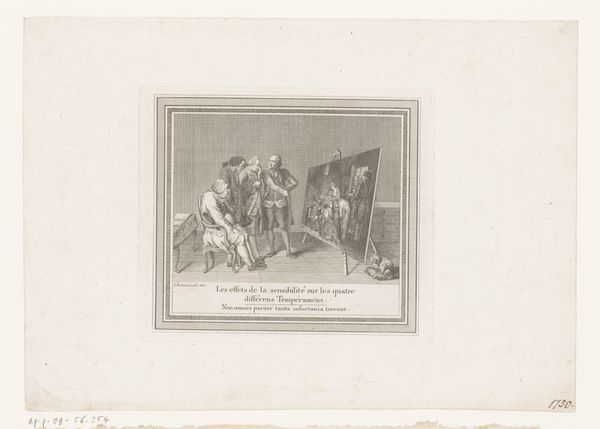
Dimensions: height 268 mm, width 216 mm
Copyright: Rijks Museum: Open Domain
Curator: This engraving by Reinier Vinkeles, completed in 1771, is entitled "Opstand tegen keizer Honorius de kop in gedrukt," or "Rebellion against Emperor Honorius suppressed." It's currently held here at the Rijksmuseum. Editor: It feels instantly chaotic. All those figures crammed into the space, their weapons raised... It conveys a real sense of impending violence. Curator: Precisely. Vinkeles was a master of narrative art. What he presents here, from a modern point of view, could easily lend itself to themes such as political propaganda, public executions or even genocidal actions in current political debate. Editor: Considering it through that contemporary lens is compelling. It is an artwork grappling with authority and popular revolt but where is the social commentary? Are we celebrating justice or mourning the loss of autonomy? The engraving begs the questions: whose story are we really telling here and for whose benefit? Curator: Good questions! Vinkeles operates firmly within the established Baroque style of the time, which emphasizes drama and grandeur. As historical record, or history painting more precisely, what perspective does this artwork foreground? Editor: Given our contemporary awareness of the politics embedded in historical representations, its critical to consider not only what is depicted but *how*. The rigid framing, the stark contrast of light and shadow...it seems designed to evoke a specific emotional response and political alignment within its original audience. Curator: Exactly. The formal presentation contributes directly to its interpretation within its specific historical and cultural moment. Today, it's not simply a depiction of past events, it can serve as a reflection on the persistent power dynamics that still permeate contemporary societies. Editor: The scene’s title hints at a clear resolution: suppression. By understanding how this image was initially received, what we learn about the broader social context in which this was produced might lead to better contextualize the subject it represents. Curator: Indeed. Studying it offers valuable insights into art as a tool for shaping public opinion and reinforcing established social norms, not to mention opening paths of interpretation to modern cultural phenomena and artistic creation. Editor: Absolutely, let us explore the role of the Baroque style itself, deeply connected to monarchies and the elite classes and that will create new discussions that invite multiple points of views of Vinkeles´ engraving and ultimately trigger richer critical awareness of historical representations of events and themes as persistent as authoritarianism or abuse.
Comments
No comments
Be the first to comment and join the conversation on the ultimate creative platform.
